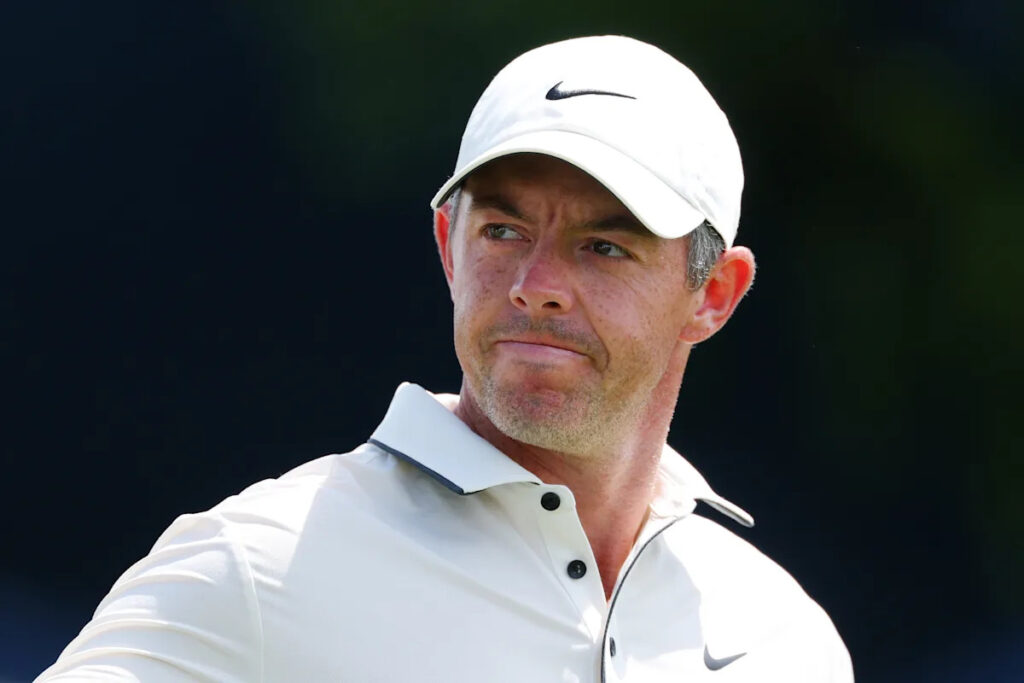CHARLOTTE, N.C. — Rory McIlroy came into this week at the PGA Championship riding the greatest wave of anticipation and goodwill since the days of prime Tiger Woods. He left it in silence, declining for a fourth day in a row to offer any comment on his round, his driver, his pursuit of the grand slam, or anything else.
After an opening-round 74 that left him 11 strokes off the lead, McIlroy rebounded with a 69 and a pair of 72s that ended his tournament at +3, with no threat whatsoever to win a Wanamaker. He surely could have offered a thoughtful perspective on what it’s like to miss out on a first-in-his-lifetime opportunity to complete the single-season grand slam — he did so earlier this week when talking about the Masters win — but he decided to skip out on any media conversation for a fourth straight day.
Advertisement
This isn’t a holier-than-thou demand for McIlroy to submit to postround questions. The question of whether players should speak to the media has consumed the golf world over the past few weeks; some players, like Collin Morikawa, have claimed they don’t owe the media (and by association, the fans) anything in the way of postround commentary. Others have pushed back on that stance, contending the players’ availability and openness to media are a key element of promoting the sport … and, by extension, increasing those sponsor checks. Otherwise, we could just watch AI simulations.
McIlroy’s decision to decline comment on all four days is especially striking because he’s long been one of the most media-friendly members of the PGA Tour. For years, he was a reliable go-to for commentary on everything ranging from his game to the state of the PGA Tour to good binge-TV recommendations. So from one perspective, you could say he’s earned a bit of freedom from the press.
Advertisement
On the other hand, this is a major week, and he’s a major player — maybe the major player — and thus draws an outsize interest from fans. Imagine the blowback if LeBron James didn’t speak for an entire playoff series.
Now, imagine the blowback if James was facing specific, pointed questions about his game and his preparation. That’s where McIlroy was as of Friday evening, when a report indicated he had switched drivers after his previous one was found to be nonconforming.
Having a nonconforming driver isn’t necessarily an indication of skulduggery; drivers that conform to USGA rules can slowly lose that status over the course of play, and the margins are so thin the distance difference between a conforming and nonconforming driver can be measured in inches or feet (in driving distance), rather than yards.
“Finding driver heads that have crept over the line of conformance is not an unusual occurrence, especially for clubs that are hit thousands of times over a long period of time,” Kerry Haigh, the PGA Championship’s Chief Championships Officer, said in a statement. “The results are kept confidential to protect players, who are unaware the club has fallen out of conformance and not responsible for it falling out of conformance other than hitting the club thousands of times. Players are simply asked to change heads if necessary, and all do without issue. To publicly identify players whose club did not conform can lead to that player being questioned unnecessarily.”
Advertisement
Yes, but … when the most visible player in the game makes such a significant change to his equipment, that warrants a little more explanation, if only for the appearance of competitive integrity. (The PGA’s statement came out nearly a full day after the initial report on McIlroy’s nonconforming driver.)
It’s a shame for the sake of golf history that McIlroy won’t complete a grand slam this season. But it’s also a shame he didn’t deign to offer his perspective on the week, either.
Read the full article here


